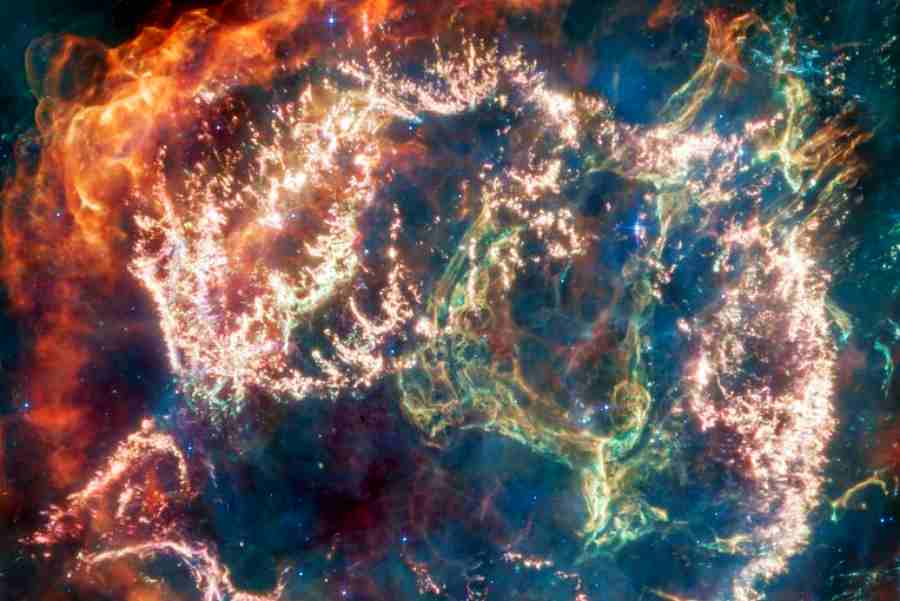Tue 11 Apr 2023:
NASA’s James Webb Space Telescope (JWST) captures the dramatic scenery left behind by a star as it completes its life cycle.
Webb’s powerful infrared view has captured in unprecedented detail the remnant of Cassiopeia A (Cas A), the remains of the massive star that exploded 340 years ago from our terrestrial perspective.
The remnant covers an extension of about 10 light years and is 11,000 light years away in the constellation Cassiopeia, according to NASA collaborators.
View this post on Instagram
Astronomers working with the space observatory have identified the remnant in question as the youngest known explosion of a massive star in our galaxy.
This means that it is an excellent opportunity to study it in detail and discover how supernovae explosions of this type occur. This new image from James Webb offers an incredible view with detail not seen before in Cas A.
“Cas A represents our best opportunity to look at the debris field of an exploded star and run a kind of stellar autopsy to understand what type of star was there beforehand and how that star exploded,” Danny Milisavljevic of Purdue University in West Lafayette, Indiana, said, who is also the principal investigator of the Webb program that captured these observations.
___________________________________________________________________________________________________________________________________
FOLLOW INDEPENDENT PRESS:
TWITTER (CLICK HERE)
https://twitter.com/IpIndependent
FACEBOOK (CLICK HERE)
https://web.facebook.com/ipindependent
Think your friends would be interested? Share this story!





